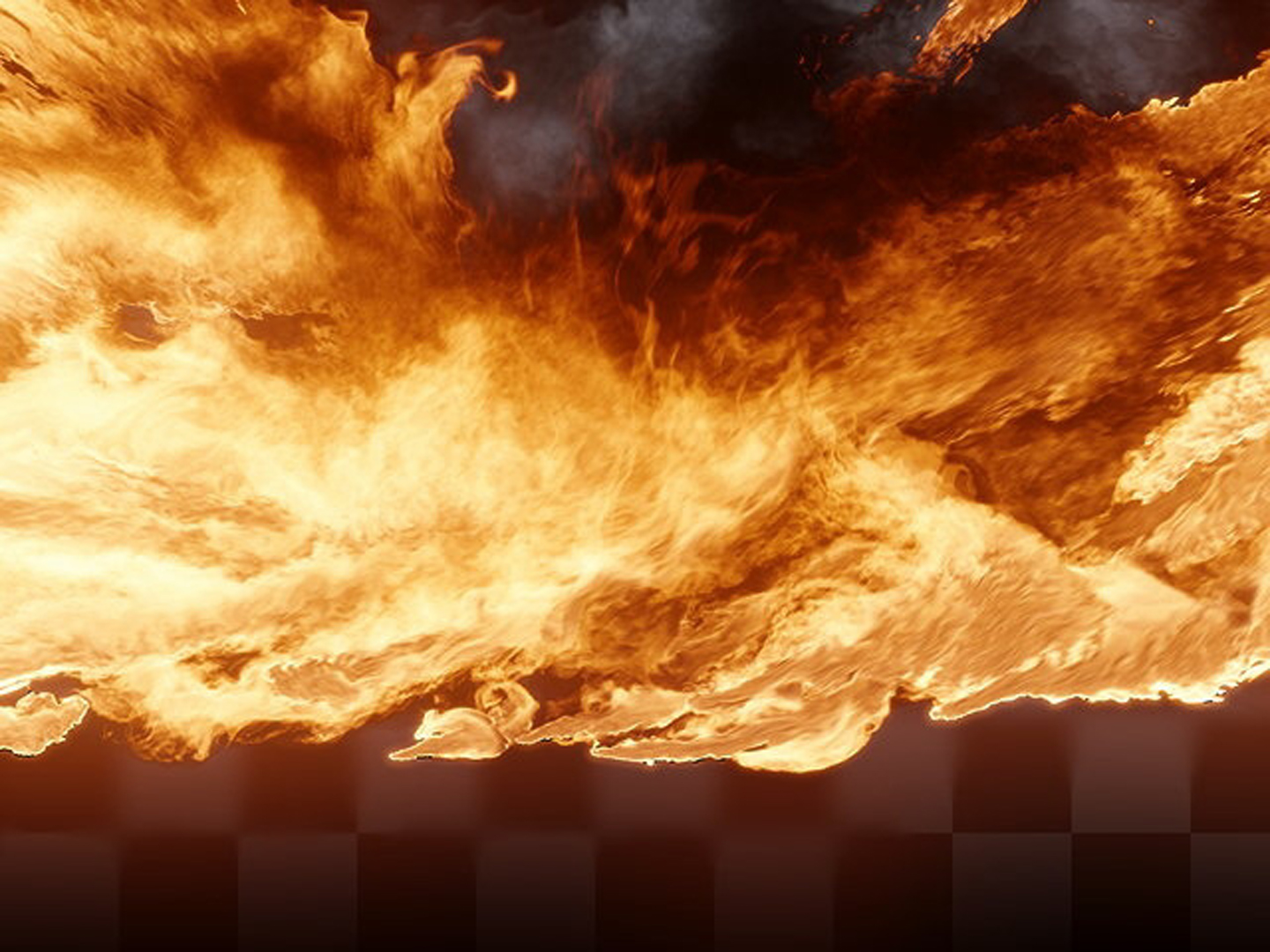“Directable, high-resolution simulation of fire on the GPU” by Horvath and Geiger
Conference:
Type(s):
Title:
- Directable, high-resolution simulation of fire on the GPU
Presenter(s)/Author(s):
Abstract:
The simulation of believable, photorealistic fire is difficult because fire is highly detailed, fast-moving, and turbulent. Traditional gridbased simulation models require large grids and long simulation times to capture even the coarsest levels of detail. In this paper, we propose a novel combination of coarse particle grid simulation with very fine, view-oriented refinement simulations performed on a GPU. We also propose a simple, GPU-based volume rendering scheme. The resulting images of fire produced by the proposed techniques are extremely detailed and can be integrated seamlessly into film-resolution images.Our refinement technique takes advantage of perceptive limitations and likely viewing behavior to split the refinement stage into separable, parallel tasks. Multiple independent GPUs are employed to rapidly refine final simulations for rendering, allowing for rapid artist turnaround time and very high resolutions.Directability is achieved by allowing virtually any user-defined particle behavior as an input to the initial coarse simulation. The physical criteria enforced by the coarse stage are minimal and could be easily implemented using any of the wide variety of commercially available fluid simulation tools. The GPU techniques utilized by our refinement stage are simple and widely available on even consumer-grade GPUs, lowering the overall implementation cost of the proposed system.
References:
1. Bridson, R., Hourihan, J., and Nordenstam, M. 2007. Curl-noise for procedural fluid flow. ACM Trans. Graph. (SIGGRAPH Proc.) 26, 1. Google ScholarDigital Library
2. Chui, C. K. 1992. An Introduction to Wavelets. Academic Press Professional, Inc. Google ScholarDigital Library
3. Fedkiw, R., Stam, J., and Jensen, H. 2001. Visual simulation of smoke. In Proc. of ACM SIGGRAPH 2001, 15–22. Google ScholarDigital Library
4. Feldman, B., O’Brien, J., and Arikan, O. 2003. Animating suspended particle explosions. ACM Trans. Graph. (SIGGRAPH Proc.) 22, 3, 708–715. Google ScholarDigital Library
5. Foster, N., and Fedkiw, R. 2001. Practical animation of liquids. In Proc. of ACM SIGGRAPH 2001, 23–30. Google ScholarDigital Library
6. Foster, N., and Metaxas, D. 1997. Controlling fluid animation. In Comput. Graph. Int., 178–188. Google ScholarDigital Library
7. Golub, G., and Loan, C. 1989. Matrix Computations. The John Hopkins University Press.Google Scholar
8. Harris, M. J. 2003. Real-Time Cloud Simulation and Rendering. PhD thesis, University of North Carolina at Chapel Hill. Google ScholarDigital Library
9. Hong, J.-M., Shinar, T., and Fedkiw, R. 2007. Wrinkled flames and cellular patterns. ACM Trans. Graph. (SIGGRAPH Proc.) 26, 3, 1188–1198. Google ScholarDigital Library
10. Lamorlette, A., and Foster, N. 2002. Structural modeling of flames for a production environment. ACM Trans. Graph. (SIGGRAPH Proc.) 21, 3, 729–735. Google ScholarDigital Library
11. Neff, M., and Fiume, E. 1999. A visual model for blast waves and fracture. In Proc. of Graph. Interface 1999, 193–202. Google ScholarDigital Library
12. Nguyen, D., Fedkiw, R., and Jensen, H. 2002. Physically based modeling and animation of fire. ACM Trans. Graph. (SIGGRAPH Proc.) 21, 721–728. Google ScholarDigital Library
13. Nishita, T., and Dobashi, Y. 2001. Modeling and rendering of various natural phenomena consisting of particles. In Proc. of Comput. Graph. Int. 2001, 149–156. Google ScholarDigital Library
14. Olano, M. 2005. Modified noise for evaluation on graphics hardware. In Graphics Hardware (2005), 105–110. Google ScholarDigital Library
15. Rasmussen, N., Nguyen, D., Geiger, W., and Fedkiw, R. 2003. Smoke simulation for large scale phenomena. ACM Trans. Graph. (SIGGRAPH Proc.) 22, 703–707. Google ScholarDigital Library
16. Reeves, W. 1983. Particle systems – a technique for modeling a class of fuzzy objects. In Comput. Graph. (Proc. of SIGGRAPH 83), vol. 17, 359–376. Google ScholarDigital Library
17. Selle, A., Rasmussen, N., and Fedkiw, R. 2005. A vortex particle method for smoke, water and explosions. ACM Trans. Graph. (SIGGRAPH Proc.) 24, 3, 910–914. Google ScholarDigital Library
18. Stam, J., and Fiume, E. 1995. Depicting fire and other gaseous phenomena using diffusion process. In Proc. of SIGGRAPH 1995, 129–136. Google ScholarDigital Library
19. Stam, J. 1999. Stable fluids. In Proc. of SIGGRAPH 99, 121–128. Google ScholarDigital Library
20. Steinhoff, J., and Underhill, D. 1994. Modification of the Euler equations for “vorticity confinement”: Application to the computation of interacting vortex rings. Phys. of Fluids 6, 8, 2738–2744.Google ScholarCross Ref
21. Yngve, G., O’Brien, J., and Hodgins, J. 2000. Animating explosions. In Proc. SIGGRAPH 2000, vol. 19, 29–36. Google ScholarDigital Library
22. Zhu, Y., and Bridson, R. 2005. Animating sand as a fluid. ACM Trans. Graph. (SIGGRAPH Proc.) 24, 3, 965–972. Google ScholarDigital Library




